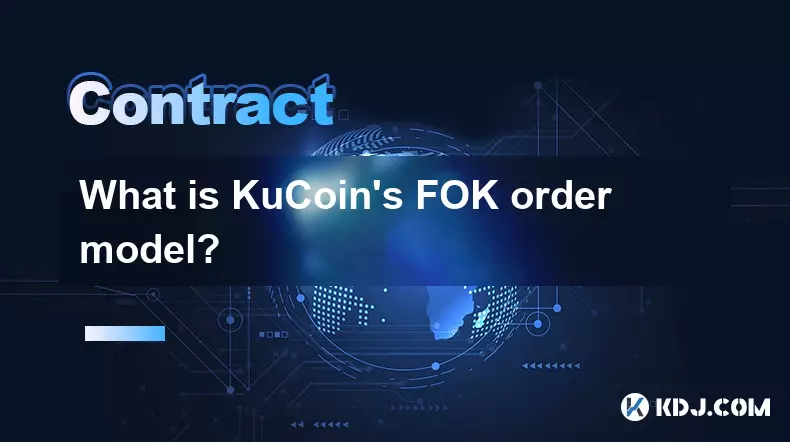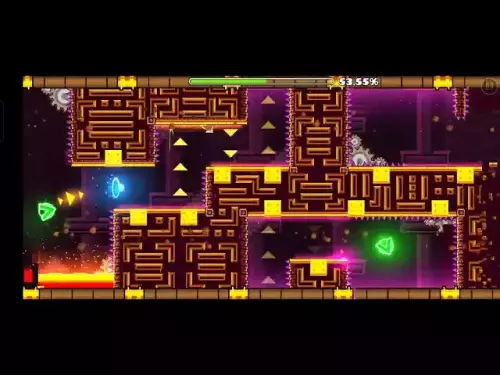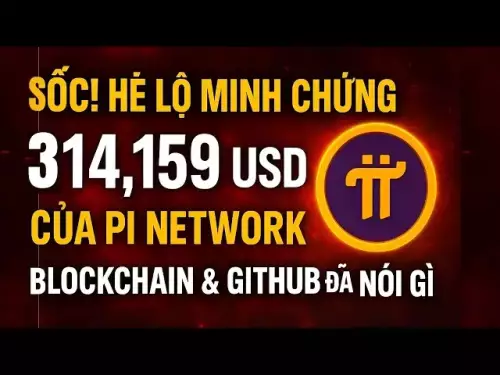-
 bitcoin
bitcoin $109547.008142 USD
0.04% -
 ethereum
ethereum $4011.838726 USD
-0.05% -
 tether
tether $1.000402 USD
-0.01% -
 xrp
xrp $2.798606 USD
0.88% -
 bnb
bnb $970.877944 USD
1.39% -
 solana
solana $202.237275 USD
-0.95% -
 usd-coin
usd-coin $0.999673 USD
0.00% -
 dogecoin
dogecoin $0.229294 USD
-1.15% -
 tron
tron $0.336370 USD
-0.45% -
 cardano
cardano $0.777260 USD
-1.66% -
 hyperliquid
hyperliquid $45.503019 USD
1.73% -
 ethena-usde
ethena-usde $1.000362 USD
0.01% -
 chainlink
chainlink $20.785303 USD
-1.10% -
 avalanche
avalanche $28.755822 USD
-0.11% -
 stellar
stellar $0.358303 USD
-0.48%
What is KuCoin's FOK order model?
KuCoin's FOK orders ensure full, immediate execution or cancellation, ideal for traders seeking precision and control in high-liquidity markets.
Sep 26, 2025 at 12:36 pm

Understanding KuCoin's FOK Order Model
1. The Fill or Kill (FOK) order model on KuCoin is a type of conditional trade instruction that requires the entire order to be executed immediately and in full, or not at all. If the market does not have sufficient liquidity to fulfill the complete quantity at the specified price, the system automatically cancels the entire order without partial fills.
2. This model is particularly useful for traders who prioritize execution certainty over order completion. By using FOK, users ensure that their trades only go through when market conditions exactly match their requirements, avoiding fragmented executions that may affect strategy outcomes.
3. On KuCoin, placing an FOK order involves selecting the order type during trade setup. Traders must specify both price and quantity, with the exchange’s matching engine scanning available orders on the opposite side of the book to determine immediate fulfillment eligibility.
4. Unlike Immediate or Cancel (IOC) orders, which allow partial fills, FOK mandates full execution. This distinction makes FOK ideal for large-volume traders seeking to avoid slippage or unintended exposure from incomplete transactions.
5. Because FOK orders are stringent in execution criteria, they often remain unfulfilled in low-liquidity markets or during volatile conditions where bid-ask spreads widen significantly. Traders must assess market depth before relying on this order type.
Strategic Use Cases for FOK Orders
1. Institutional investors frequently deploy FOK orders when entering or exiting large positions. By demanding full execution, they minimize market impact and prevent adversaries from detecting their trading intentions through partial fills.
2. Arbitrage strategies benefit from FOK orders by ensuring simultaneous entry across multiple exchanges. If one leg of the arbitrage cannot execute fully, the order is canceled, preserving the risk-free nature of the trade.
3. High-frequency trading algorithms utilize FOK to maintain precision in timing and volume. These systems rely on predictable execution behavior, and FOK provides clarity by eliminating uncertainty around partial matches.
4. Traders managing tight stop-loss or take-profit levels apply FOK to enforce discipline. When price reaches a predefined threshold, the FOK condition ensures either total exit or no action, aligning with strict risk management protocols.
5. During major news events or token listings, volatility spikes can distort order book integrity. FOK helps traders avoid unfavorable fills by rejecting any execution that doesn’t meet exact parameters, even if temporary imbalances exist.
Risks and Limitations of FOK on KuCoin
1. The primary limitation of FOK orders is their susceptibility to non-execution in illiquid markets. Even if the price level is correct, insufficient counterparties may prevent full fill, leading to missed opportunities.
2. Traders using FOK must closely monitor order book depth. A sudden drop in available liquidity—common during flash crashes or pump-and-dump schemes—can invalidate otherwise valid orders without warning.
3. Market manipulation tactics such as spoofing or layering can exploit FOK behavior. Fake large orders placed and quickly canceled may trigger FOK rejections, forcing traders to reassess entries at less favorable prices.
4. Execution speed becomes critical with FOK. Network latency or API delays may result in outdated market data being used for order placement, increasing the likelihood of rejection despite apparent liquidity.
5. KuCoin’s implementation does not guarantee priority in matching beyond standard price-time rules. A FOK order at a competitive price might still fail if competing orders consume available volume milliseconds earlier.
How FOK Differs from Other Order Types on KuCoin
1. Compared to limit orders, FOK adds immediacy and completeness constraints. While a standard limit order waits for matching prices indefinitely, FOK enforces instant execution or cancellation.
2. Market orders guarantee execution but not price; FOK guarantees neither but ensures no partial fills occur. This trade-off favors control over certainty.
3. Stop-limit orders activate only upon reaching a trigger price, then behave like regular limit orders. FOK operates independently of triggers and focuses solely on execution conditions once active.
p>4. Post-only orders prevent maker fee payments by canceling if they would immediately match. FOK allows matching but only if the entire volume clears instantly, serving different purposes despite overlapping use cases.
5. Trailing stop orders adjust dynamically with market movement, whereas FOK remains static once placed. Combining these types is not supported, requiring manual coordination for complex strategies.
Frequently Asked Questions
Can I modify a FOK order after submission on KuCoin? No, once a FOK order is submitted, it cannot be modified. If the order has not been executed, you can cancel it and place a new one with updated parameters.
Does KuCoin charge fees for rejected FOK orders? KuCoin does not charge trading fees for orders that do not execute. Since FOK orders are canceled entirely when unfilled, no fees apply in such cases.
Are FOK orders available for all trading pairs on KuCoin? Most major and high-liquidity pairs support FOK orders. However, availability may vary for newly listed or low-volume tokens. Users should verify order type options in the trading interface.
Can I use FOK orders in margin or futures trading on KuCoin? FOK is primarily available in spot trading. Margin and futures markets typically use different order models optimized for leverage and position management, limiting FOK functionality in those sections.
Disclaimer:info@kdj.com
The information provided is not trading advice. kdj.com does not assume any responsibility for any investments made based on the information provided in this article. Cryptocurrencies are highly volatile and it is highly recommended that you invest with caution after thorough research!
If you believe that the content used on this website infringes your copyright, please contact us immediately (info@kdj.com) and we will delete it promptly.
- Altcoin Season Heats Up: Is ARB, PEPE, or a New Challenger Your Best Bet?
- 2025-09-28 10:25:11
- Shiba Inu, Meme Coins, and Popularity: What's Hot and What's Not in the Wild World of Crypto
- 2025-09-28 10:25:11
- Cardano, Toncoin, and the Quest for Crypto's Next Big Thing
- 2025-09-28 10:45:12
- XRP, Ripple, and the Payment Token Race: What's Next?
- 2025-09-28 10:45:12
- MoonBull Mania: Is This the Next Bonk in the Cryptoverse?
- 2025-09-28 10:30:00
- Bitcoin's 'Uptober' Hopes Clash with Selling Pressure: A New Yorker's Take
- 2025-09-28 10:50:01
Related knowledge

How do I enable the "scalping-only" mode for Cardano (ADA) contracts?
Sep 24,2025 at 03:19am
Understanding Scalping Strategies in Crypto Derivatives1. Scalping in cryptocurrency trading refers to executing multiple short-term trades within min...

What is the settlement time for Cardano (ADA) contracts?
Sep 28,2025 at 04:18am
Understanding Cardano's Contract Settlement Mechanism1. Cardano operates on a proof-of-stake consensus model known as Ouroboros, which fundamentally i...

How do I add margin to Cardano (ADA) contracts?
Sep 27,2025 at 07:54pm
Understanding Margin in Cardano (ADA) Smart ContractsCardano operates on a proof-of-stake blockchain that supports smart contracts through its Plutus ...

What is the maximum position limit for Cardano (ADA) contracts?
Sep 23,2025 at 11:00pm
Understanding ADA Futures and Derivatives Market Structure1. Cardano (ADA) futures contracts are offered by several major cryptocurrency derivatives e...

What is the maker fee for Cardano (ADA) contracts?
Sep 26,2025 at 09:01am
Understanding Maker Fees in Cardano (ADA) Contracts1. The concept of maker fees applies broadly across decentralized exchanges and smart contract plat...

How can I view open interest in Cardano (ADA) contracts?
Sep 24,2025 at 07:36am
Understanding Open Interest in Cardano Derivatives1. Open interest refers to the total number of outstanding derivative contracts, such as futures or ...

How do I enable the "scalping-only" mode for Cardano (ADA) contracts?
Sep 24,2025 at 03:19am
Understanding Scalping Strategies in Crypto Derivatives1. Scalping in cryptocurrency trading refers to executing multiple short-term trades within min...

What is the settlement time for Cardano (ADA) contracts?
Sep 28,2025 at 04:18am
Understanding Cardano's Contract Settlement Mechanism1. Cardano operates on a proof-of-stake consensus model known as Ouroboros, which fundamentally i...

How do I add margin to Cardano (ADA) contracts?
Sep 27,2025 at 07:54pm
Understanding Margin in Cardano (ADA) Smart ContractsCardano operates on a proof-of-stake blockchain that supports smart contracts through its Plutus ...

What is the maximum position limit for Cardano (ADA) contracts?
Sep 23,2025 at 11:00pm
Understanding ADA Futures and Derivatives Market Structure1. Cardano (ADA) futures contracts are offered by several major cryptocurrency derivatives e...

What is the maker fee for Cardano (ADA) contracts?
Sep 26,2025 at 09:01am
Understanding Maker Fees in Cardano (ADA) Contracts1. The concept of maker fees applies broadly across decentralized exchanges and smart contract plat...

How can I view open interest in Cardano (ADA) contracts?
Sep 24,2025 at 07:36am
Understanding Open Interest in Cardano Derivatives1. Open interest refers to the total number of outstanding derivative contracts, such as futures or ...
See all articles










































































